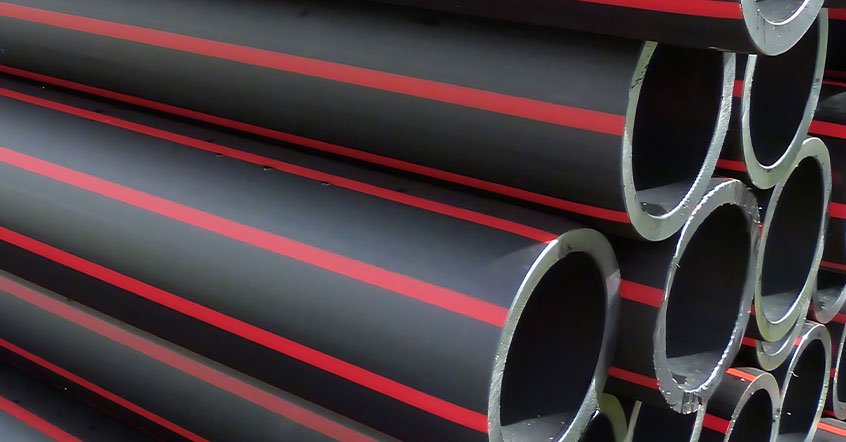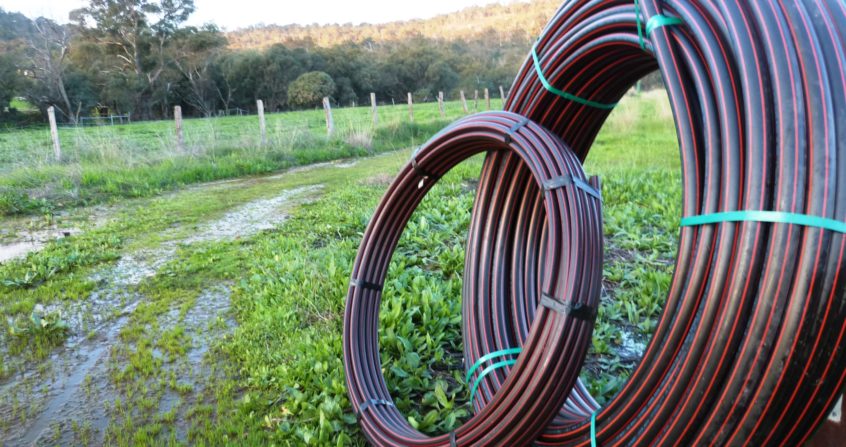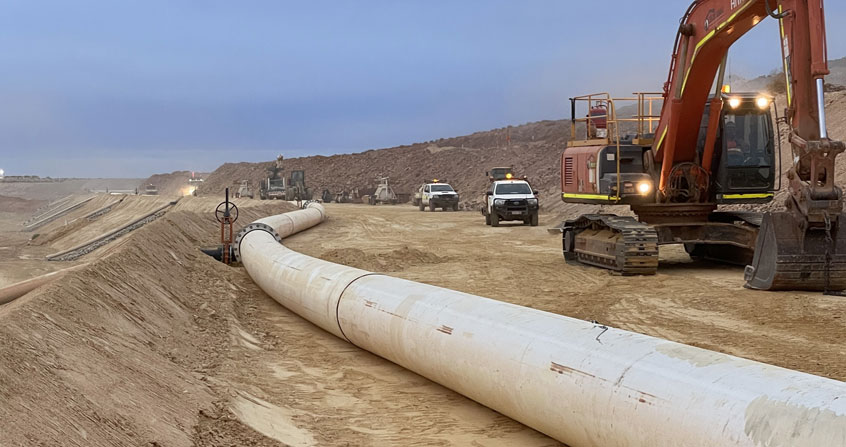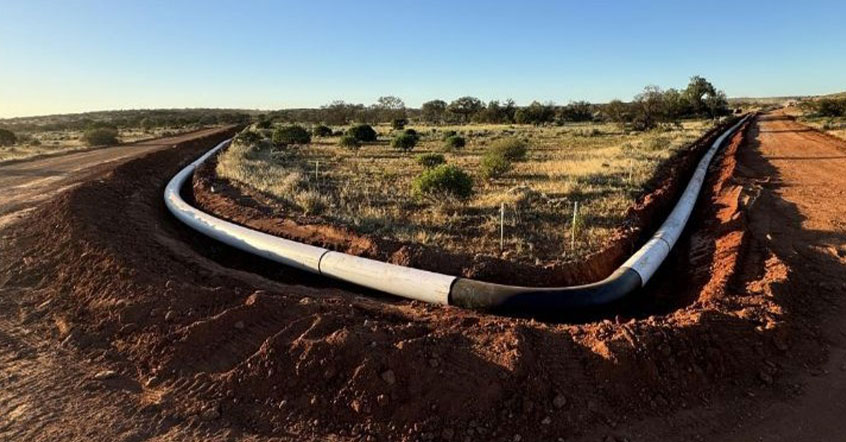HDPE Pipe Loading Chart & Capacity Guide (Australia)
Please note
This information is a guide only, based on typical semi-trailer capacities. Actual quantities may vary. We recommend contacting our team for project-specific logistics advice
Our guide provides a detailed HDPE pipe truck capacity and loading chart for safe and compliant transport on Australian roads, specifically tailored for semi-trailers.
To assist with safe and efficient HDPE pipe loading, Acu-Tech Piping Systems in Australia, provides a comprehensive loading guide for semi-trailers. The HDPE pipe loading guide details the optimal loading configurations for the following poly pipe dimensions:
- HDPE Straight Lengths: 110mm OD to 800mm OD (12m & 20m lengths, SDR11)
- HDPE Pipe Coils: 63mm OD to 160mm OD
*For convenient on-site reference, download the complete HDPE pipe loading guide for semi-trailers, detailing pipe capacity and safe loading practices.
The importance of safe HDPE pipe transport & compliance
The safe transport of large-diameter polyethylene pipe is a critical, high-risk step in any project. Improper loading can lead to severe consequences, including significant fines from authorities, costly damage to the pipe itself (such as crushing or deformation), major project delays, and unacceptable safety risks to drivers and the public.
Our guide is specifically designed to help you mitigate these risks and ensure full compliance with the strict Australian transport regulations, primarily governed by the National Heavy Vehicle Regulator (NHVR). Following the NHVR’s standards is crucial, as they provide clear, actionable advice on securing both rigid HDPE straight lengths and flexible HDPE pipe coils, which each require a specific approach to prevent shifting during transit.
By adhering to the recommendations in this guide, you can protect your valuable assets and ensure they arrive at the job site in perfect condition, ready for immediate installation.
We refer clients to the National Heavy Vehicle Regulator’s (NHVR) loading requirements for additional detailed obligations and encourage you to download the load restraint guide from the NHVR.
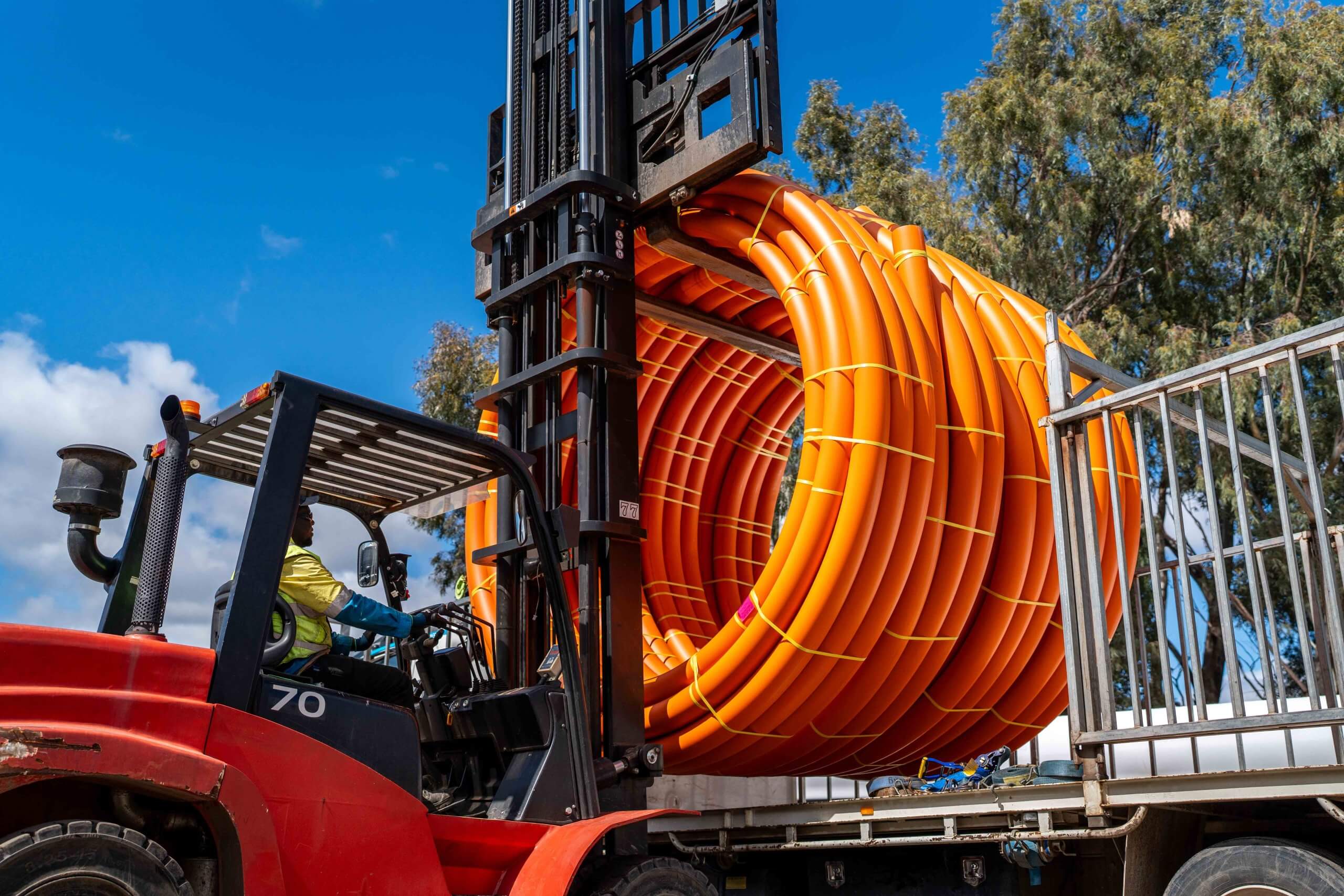
Optimise Loads: HDPE Pipe Capacity & Truck Loading Chart
To make your logistics planning seamless and cost-effective, our HDPE pipe loading guide includes a comprehensive truck capacity chart for HDPE pipe. This invaluable resource gives you the precise information needed to calculate the maximum number of pipes that can be safely loaded based on three key variables: diameter (OD), length, and pipe wall thickness (SDR).
Maximising efficiency means you can transport the most material while remaining compliant, reducing the total number of trips required for a project. The guide covers:
-
Proper Weight Distribution: Ensuring the load is balanced across the axles to prevent exceeding legal weight limits.
-
Strapping Methods: Recommended tension and restraint points to meet national standards.
-
Recommended Overhangs: Clear guidelines for permissible front and rear overhangs on straight lengths to meet Australian road rules.
We take the guesswork out of transport, allowing you to optimise every load for maximum efficiency, security, and compliance. Referencing this chart is the first step in successful project delivery.
Step-by-Step Guide to HDPE Pipe Stacking and Securing
Beyond just the numbers, our guide covers a range of essential safe loading practices to maintain the integrity of the HDPE pipe and the safety of the load.
Correct Stacking Methodology:
-
Preventing Damage: Pipes must be stacked correctly to prevent crushing, kinking, and deformation of the pipe walls. This is especially critical for large-diameter or thin-walled (high SDR) pipes.
-
Using Bearers: Always use timber or equivalent non-damaging bearers placed at regular intervals between layers of pipes to ensure proper weight distribution and stop pipes from rolling.
-
Stability: Pipes should be stacked in a stable, interlocking pyramid or layer formation, ensuring no pipe is resting solely on another pipe’s unsupported wall.
Securing the Load (Load Restraint):
-
Restraint Requirements: All loads, including HDPE pipe, must be restrained to withstand a minimum g-force, as mandated by the NHVR (e.g., 0.8g forward, 0.5g rearward, 0.5g sideways).
-
Securing Straight Lengths: Use high-quality load binders and straps that are correctly rated for the mass of the pipes. Straps must be placed over bearers, not directly on the pipe, and tensioned regularly during transit.
-
Securing Coils: HDPE coils must be stood vertically or secured horizontally, ensuring they cannot roll or tip. The centre of the coil requires specific restraints to prevent lateral shift.
-
Load Check: A comprehensive load check must be performed before departure and regularly throughout the journey to ensure straps maintain tension and the load remains secure.
Whether you’re a transport manager, a driver, or a project supervisor, our guide is an indispensable tool for ensuring that every load is compliant, secure, and ready for a successful delivery.
Why Choose Acu-Tech for Your HDPE Pipe Needs?
Choosing Acu-Tech means choosing quality, reliability, and customised solutions tailored to your specific needs. With 25 years of poly pipe manufacturing experience, we provide products that meet the highest Australian standards, backed by technical support, training, and resources like this essential loading guide. Get in touch.
Rated 4.8 / 5 based on 24 reviews

